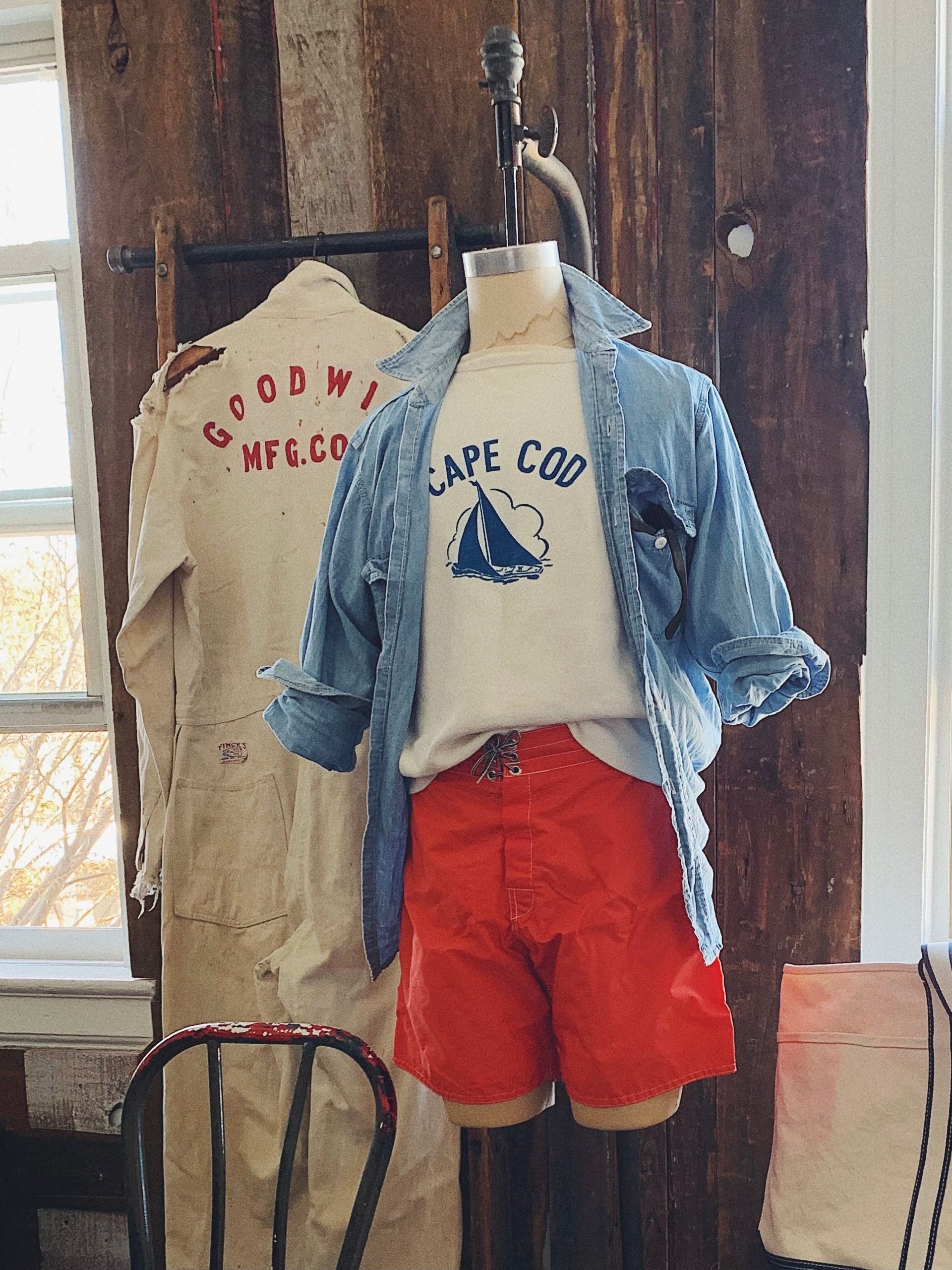
A couple of years ago, I bought a vintage Lee 101-J trucker jacket from Brian at Wooden Sleepers, one of my favorite vintage dealers. I paid about $150, which is roughly $75 more than what I would have spent on eBay or at a local thrift store. But I was happy to pay for the jacket because it came with so many great details — a naturally faded wear pattern, some busted up seams, and cuffs that have been frayed from heavy use. Best of all, Brian repaired the ripped collar with some hand stitching and oxford cloth. I love the detail because it’s a nod to my favorite type of button-up shirt.
The jacket is so simple, but since purchasing it, it’s become one of my most worn items. I wear it more than the designer pieces I had no business buying in the first place, or those rare Japanese jackets I purchased through international proxies. There’s nothing particularly rare about this trucker — eBay is littered with hundreds of them, and you can find similar jackets at nearly any thrift store. But I would go as far as to say that this jacket is cooler than any designer reproduction. I wear mine with tan RRL jeans, off-white Sid Mashburn jeans, white Stan Ray painter pants, and olive military fatigues. I like it because the jacket has a naturally broken-in look that makes me feel cooler than I am.
Over the years, I’ve come to appreciate that some things are better bought used. French chore coats, black leather double riders, flannel shirts, trucker jackets, and Carhartt double knee pants almost always look better when they’ve been heavily worn in. To be sure, you can wear those items yourself, but when you’re buying them second-hand, the work has been done for you. Earlier this year, I asked Brian at Wooden Sleepers which fall/ winter items he thinks are better when they’re bought used. Recently, I asked him the same question for spring/ summer items. Here’s what he had to say:
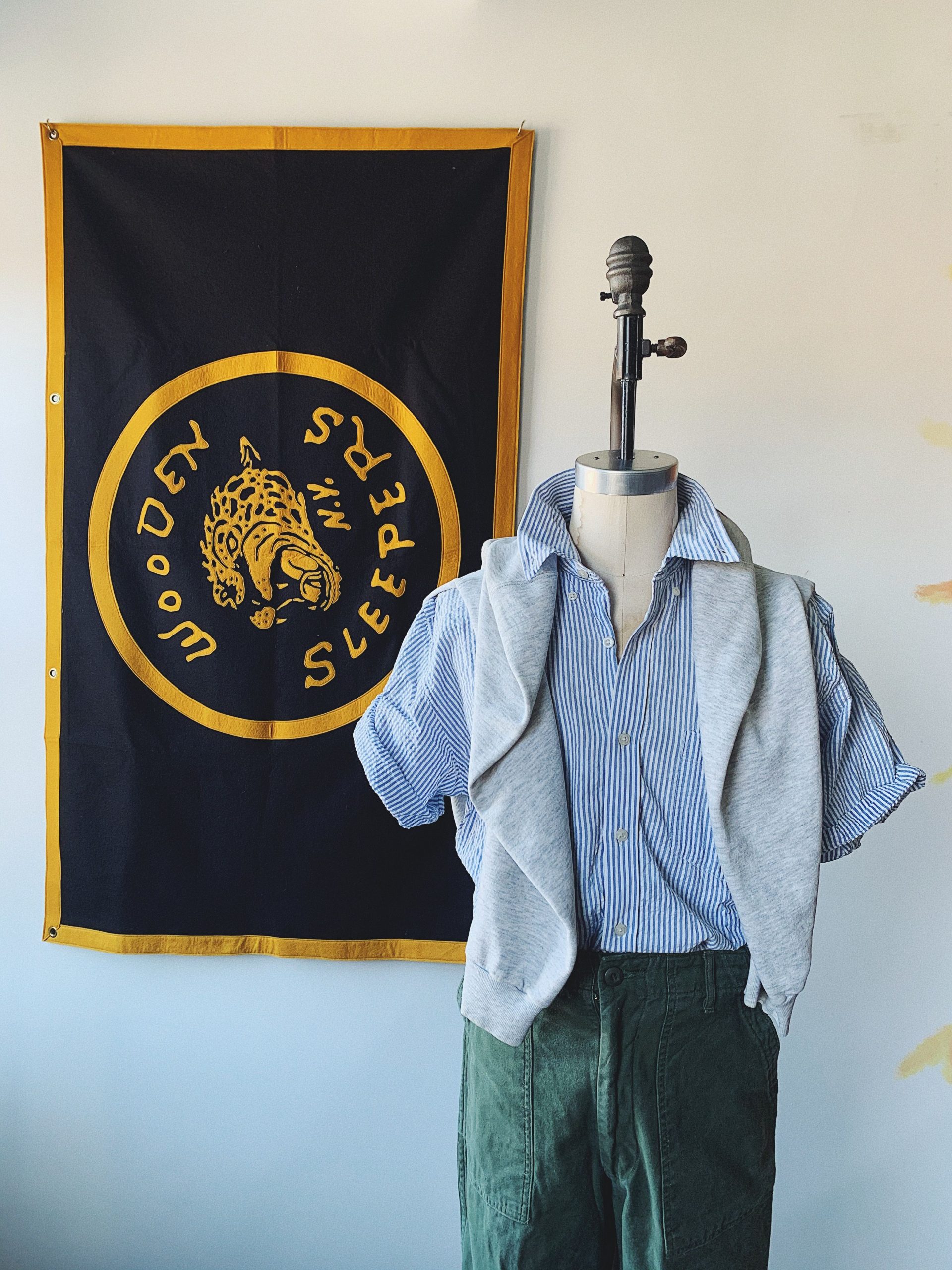
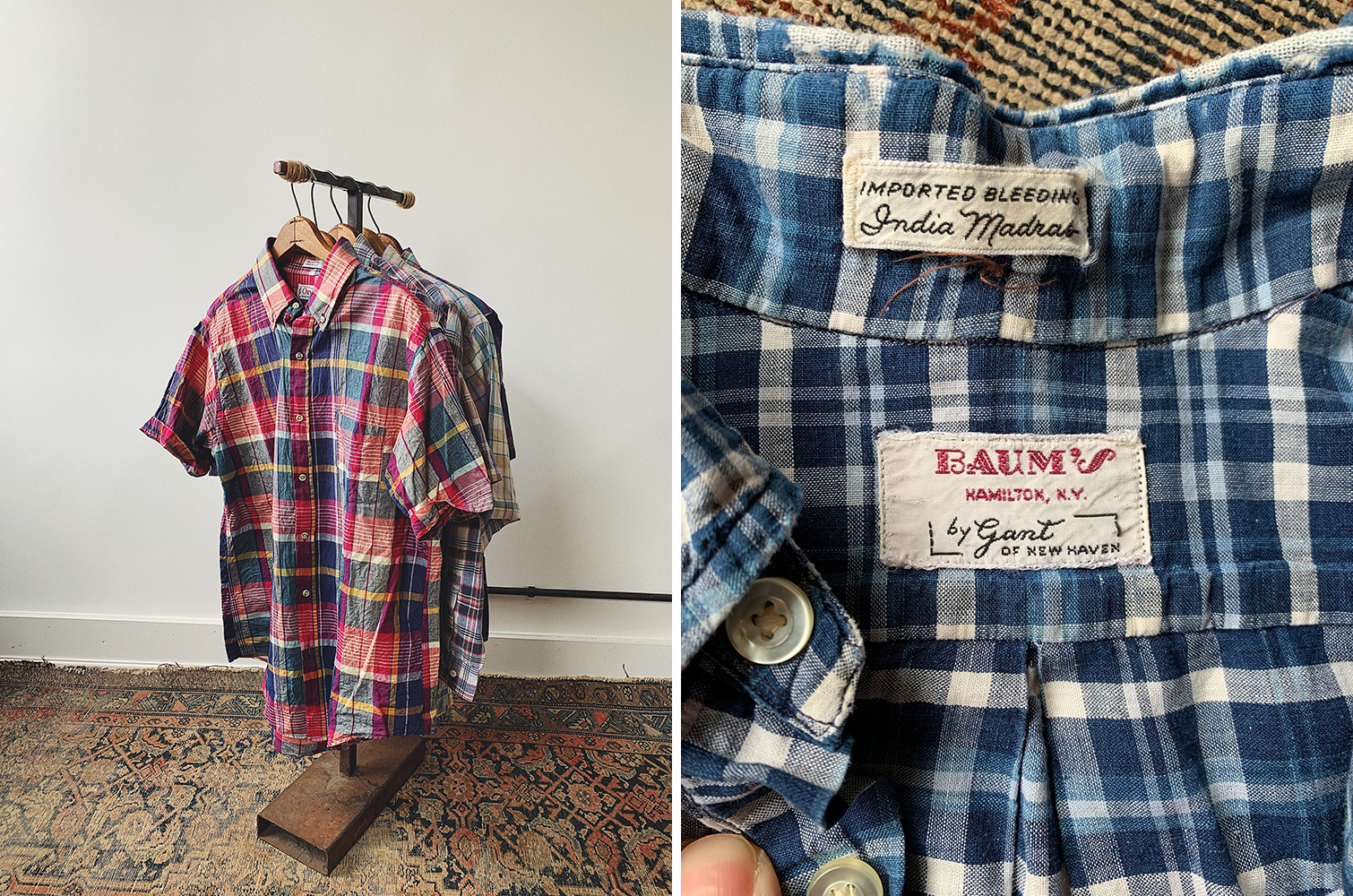
Summer Shirts in Madras, Seersucker, and Fun Prints
“There are so many good brands out there for classic summer shirts: LL Bean, Lands’ End, Eddie Bauer, and Polo Ralph Lauren, just to name a few. You can find well-made shirts from the 1980s that were cut and sewn from crinkly seersucker or authentic Madras. These will have all the things you’re looking for in a summer shirt — the right cut and that old, soft cotton feel. I like shirts made in the USA, but for the Madras fabric, I want something from India. I also think ‘fun prints’ are better when they’re vintage. Today, lots of brands make good “fun prints,” but when you buy something vintage, you know you’re getting something unique. Some of those old Polo ‘fun prints’ can be eccentric, but they’re also so good.
As for how to wear these items, I like offsetting preppy things with something rugged. If I’m wearing a Madras shirt, I won’t reach for chino shorts, but rather military fatigue shorts. A short-sleeved Madras shirt with some selvedge denim jeans and Chuck Taylor high-tops can be a cool 1950s Sandlot type of look. Similarly, if I’m wearing a traditionally preppy bottom, I might wear a military top or an old band t-shirt. This way, I’m not head-to-toe in prep. New York City gets so hot in the summertime, I often can only play around with my shirt, pant, and footwear combinations to create an interesting outfit.”
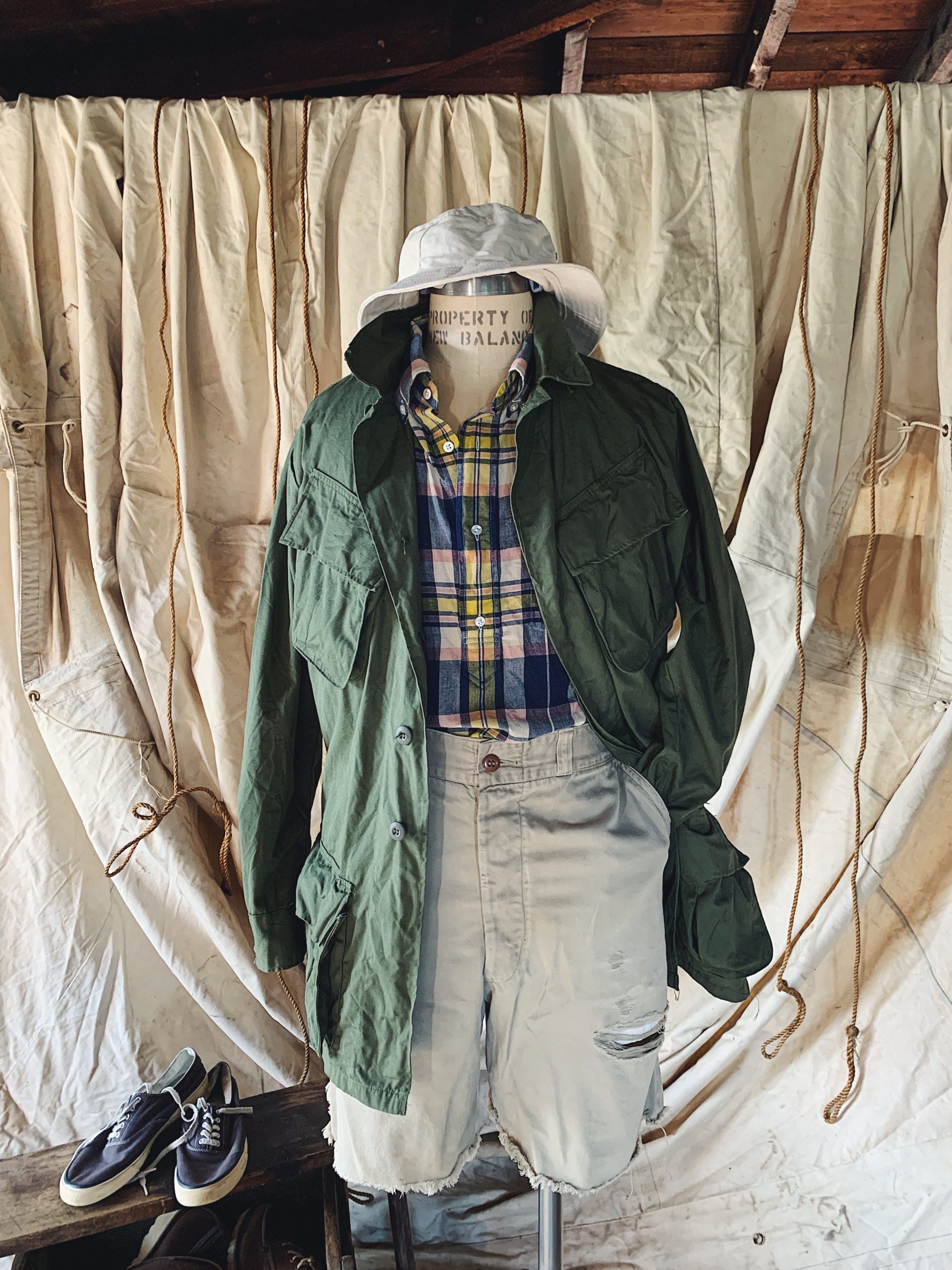
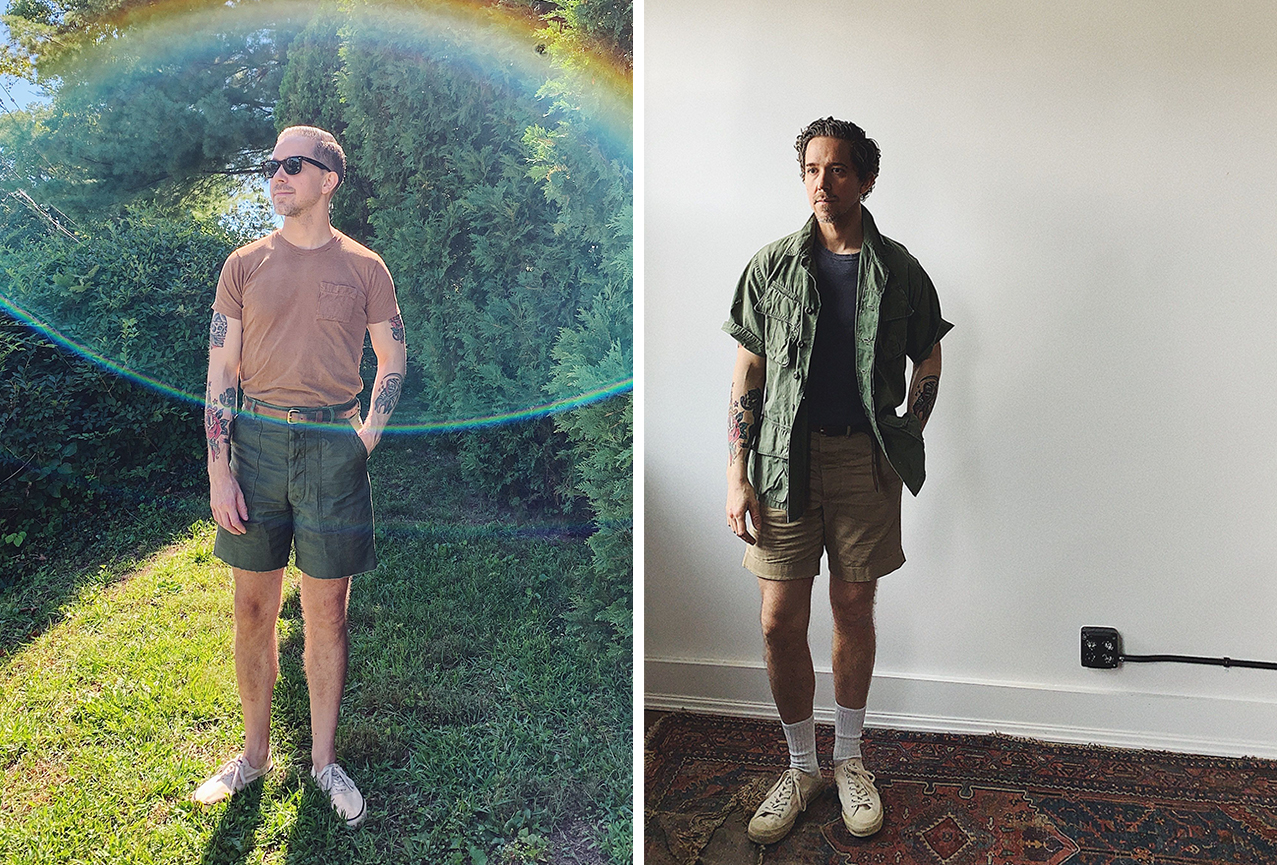
Cut Off Military Fatigues
“I like wearing cutoff military fatigues in the summer with something like a t-shirt or polo. For one, it’s hard for me to find shorts in a fit that I like. Modern shorts tend to be slim and tapered, whereas I prefer a wider fit. Since OG 107 Baker pants and older military khakis tend to be roomier, they’ll also have a wider leg opening when you cut off the legs. Secondly, when you make your own shorts, you can determine your inseam. I like to hack off the legs and leave the hem raw, but you can also get them professionally hemmed by your tailor.”
Derek: Do you have an opinion on the proper inseam length? That seems to be a very hot topic right now.
“That’s so funny. [laughs] I think guys can do whatever they want. There’s probably good photographic evidence for any inseam length that ends above the knees. Some guys look good in shorts that terminate just above the knee, which is perhaps something like 9”. That’s too long for me, but it works for them. Conversely, there are guys who look great with a 5” inseam. Unless I’m out for a jog, that’s very short for me. So for me, the ideal is 7” or 8”. That’s a few inches above the knee, but it’s not short short.”
Derek: Wow, are you not on the 5″ train? This a very brave statement. I can’t be responsible for what happens to you.
“I’ll go to bat for the 7″ inseam. I mean, if I’m wearing Patagonia Baggies, then I’ll do the 5″, but that’s like a bathing suit for me. That’s what I wear to the beach. I’m not comfortable wearing that in other public settings.”
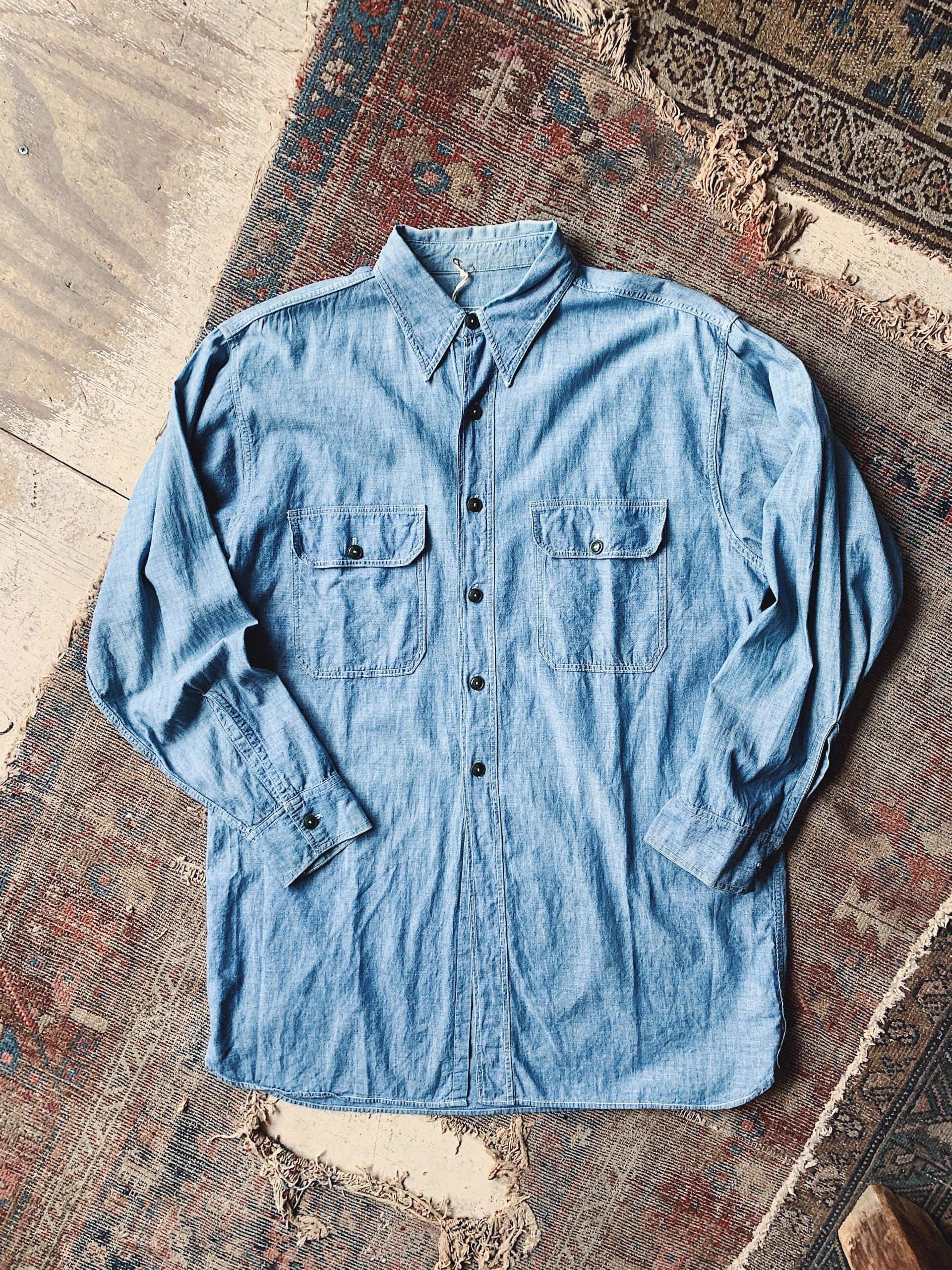
Chambray Shirt
“Chambray shirts are such an essential part of my wardrobe. I wear them year-round. In the summer, I wear short-sleeved chambray shirts over a t-shirt, worn open and layered like a lightweight jacket. You can make these out of long-sleeved chambrays if the proportions are correct.
When it comes to vintage, I always come back to the value proposition. There’s no shortage of amazing chambrays out there at all possible price points. But with vintage, you can get a really nice chambray at a much more attainable price. Even a chambray from the 1970s or ‘80s will have those triple chain-stitching, reinforced elbows, and nice buttons that are typically only found nowadays on a $300 Japanese reproduction. Don’t get me wrong — I love those Japanese shirts and have many of them, as well. But the one I wear most is an old Big Mac chambray. Maybe because I didn’t spend $300 on it, it doesn’t feel so precious, so I wear it often. Also, old chambrays have been worn and washed a bunch of times, so you get this soft, worn-in thing that’s ready to go. When shopping for a vintage chambray, look for a shirt that’s made from pure cotton. Starting around the 1980s, a lot of workwear became cotton-poly blend, but pure cotton just ages and feels better.”
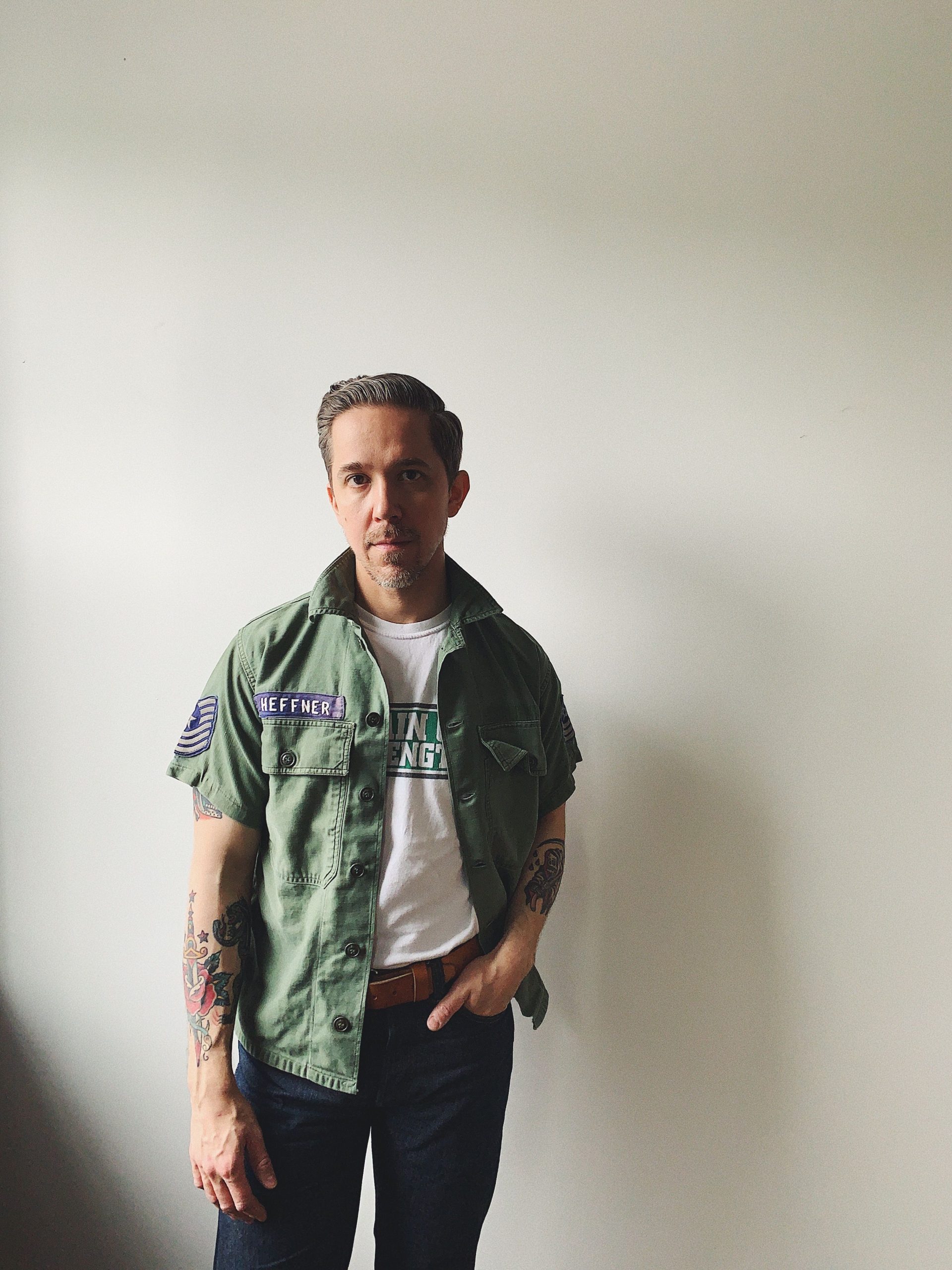
Military Shirt Worn As A Light Jacket
“American soldiers used to wear OG-107 shirts, typically paired with something such as a Baker pant. These are super soft, olive green, pure cotton military shirts designed to be worn buttoned up. But I find they look great when worn open and layered over an oxford cloth button-down, polo, or even just a t-shirt. They function as lightweight jackets in the summertime, which can help finish a look. Vintage khaki field shirts also work well this sort of thing. Those are the ones that were made sometimes in the mid-century and designed to be worn with matching high-rise, full-legged, khaki field pants. The top was designed to be worn as a shirt, but the fabric is hefty enough where you can use it as a lightweight jacket.
For me, these are things you can wear in a workwear outfit, such as the shirt jacket with t-shirts and jeans. Or you can use it to tone down something that feels too preppy. For example, if I’m wearing a polo shirt with some seersucker shorts and a pair of penny loafers, I might feel the outfit is too preppy for my personality. But if I wear a military shirt over the polo, it feels more grounded.
Again, when shopping for these things, look for something made from pure cotton. The cotton-poly blend stuff they started using in the 1980s just didn’t age as well — it didn’t get that soft feel or broken-in fading. But anything pre-80s is fair game. The good thing about military garments is that they usually have the manufacturing info somewhere inside: the date the item was produced, the contractor, etc. For the khaki stuff, again, make sure it’s pure cotton. Some of those khaki uniforms were made from wool, which you definitely don’t want to be wearing in the summertime.”
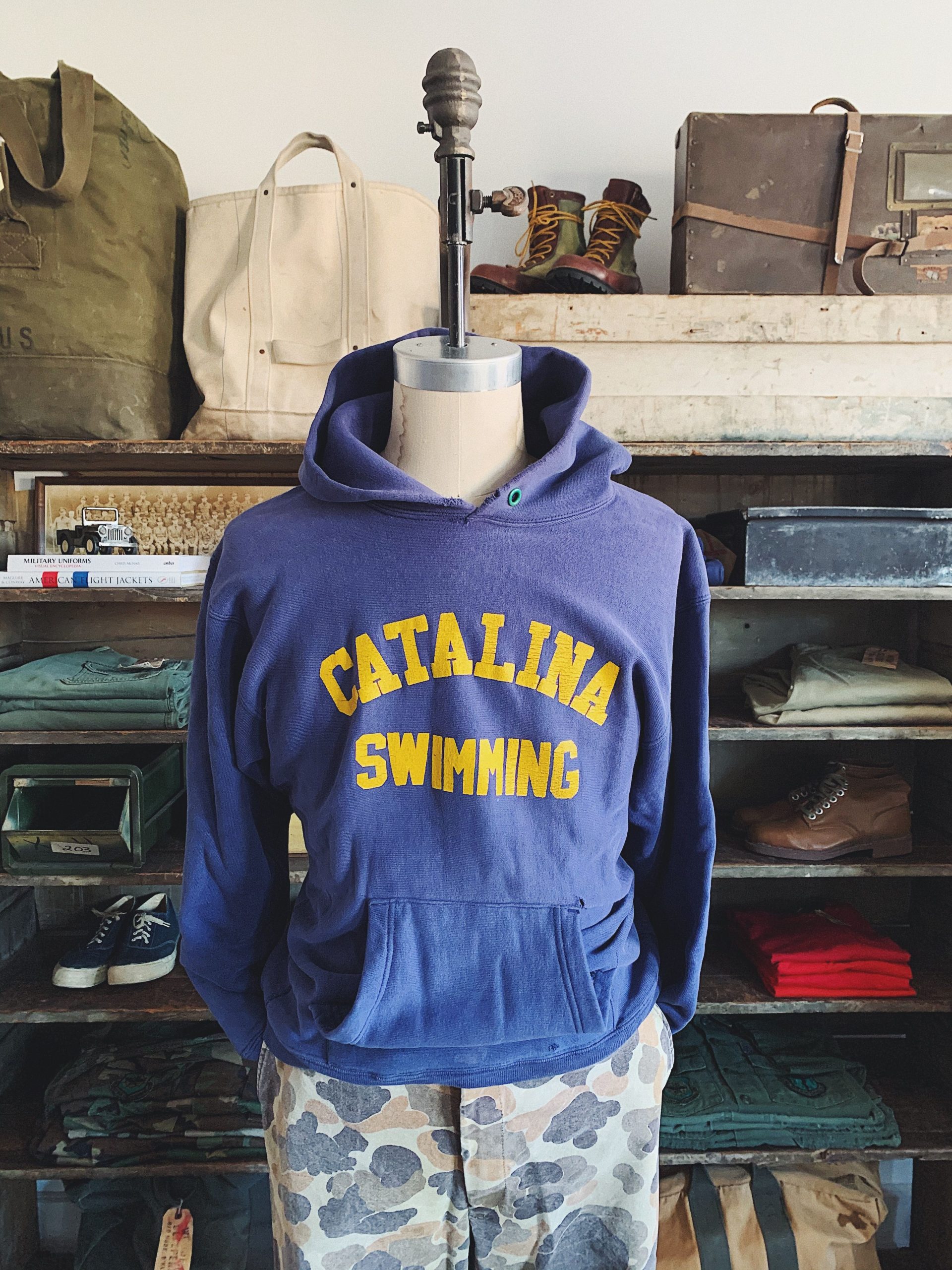
Sweatshirts, Hoodie or Crewneck
“For cooler days in the earlier spring months, I’m a big fan of wearing a long-sleeved t-shirt, crewneck sweatshirt, or a hoodie paired with shorts. If you can raid your dad’s closet for his old collegiate sweatshirt, that’s probably your best bet. If that’s not an option, then you can scour eBay. Surprisingly, there are still so many affordable options on the market, even though there’s this growing community of highly obsessed aficionados for vintage sweatshirts. It just requires a bit of digging.
There are two camps on this. First, some people love the look of a destroyed sweatshirt. You can find entire Instagram accounts nowadays dedicated to something called ‘after hoods.’ Those are youth sweatshirts from the 1940s or so, where someone attached a hoodie onto a crewneck, so you have two different pieces. Real McCoys and other brands have reproduced this type of hoodie, but people go nuts for the originals. If there’s a cool, crackled graphic on it, the sweatshirt can go for many hundreds of dollars. It’s hard to explain how these things take off. It only takes a few people to become obsessed with this stuff, amass gigantic collections, photograph the pieces, and share the images online. Then becomes ‘a thing.’
However, unless you’re involved in these communities, you can still get a quality vintage sweatshirt for cheap. It just depends on your desired fit. For instance, Champion made these reverse weave, oversized sweats in the 1980s and ‘90s. They had a lot of room through the chest, shoulders, and biceps, and then they tapered down to the waist. Many vintage collectors love those types of sweats, but you also have to want that look — it’s a sort of 1980s jock look. In contrast, a single- or double-V sweatshirt from the 1940s or 50s is going to be very trim and short, as people wore them with high-waisted trousers. So it just depends on which era you want to evoke. Older sweatshirts are often more expensive because they’re rarer, but I don’t think there’s anything wrong with a more common Russell sweatshirt from the ‘90s. Just think about the decade you like and then find something with a good cut and some nice fading.”

Cotton Sweater
“For people who have been reading menswear blogs for a while now, I must sound really boring, as I’ve been talking about the same things for the last ten years. But for my taste, I feel like many of those old American brands have done it all — LL Bean, Woolrich, Land’s End, Eddie Bauer, Polo Ralph Lauren, etc. If you use those names as filters when searching on eBay, you can find the classic American version of a cotton sweater, parka, Madras shirt, etc. Of course, not everything they made is good, but by and large, you can’t really miss with these brands.
For instance, I have this navy and cream striped sweater from Woolrich that I love. It’s made from cotton, so it feels great even in the summertime. If I’m going to a BBQ or the beach, I’ll have it in my bag just in case. If you go to the mall today and get something similar, the fabric will be thinner, wimpier, and the sweater just isn’t going to feel as good. The vintage stuff in this department often feels better made.”
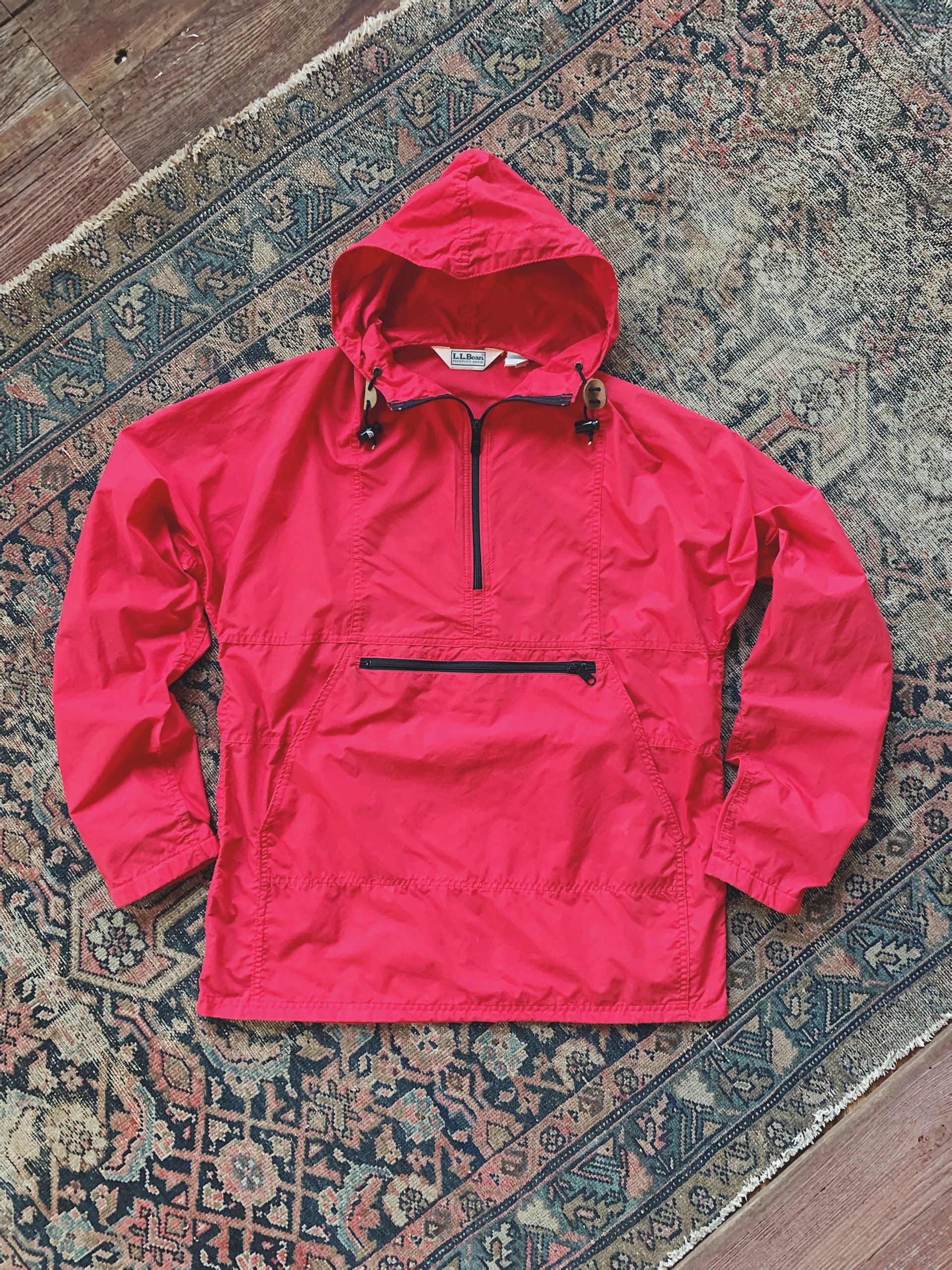
Anorak
“So many brands today are so boring and conservative. I understand why. If you’re a giant company and you see you sold 100,000 anoraks in navy one season, you’re going to keep making more. On the other hand, these same brands made jackets in the 1980s and ‘90s in much wilder, more exciting colors. It wasn’t just navy. They had anoraks in dusty syrup pink, deep purples, Kelly green, bright red, etc. You’re just not going to find anoraks today in these colors. If it’s not going to be a piece that you’re going to wear every day, I don’t think it has to be so grounded.
When shopping for one, you can go back to the classic brands — Patagonia, Sierra Designs, Woolrich, etc. The great thing about many of those 1980s and ‘90s anoraks is that they were made when people wore outdoorsy clothes as fashion. Those are the jackets you want because the ones worn by actual outdoorsy people are often thrashed beyond repair. But if someone wore it for style, the jacket may be in mint condition.”
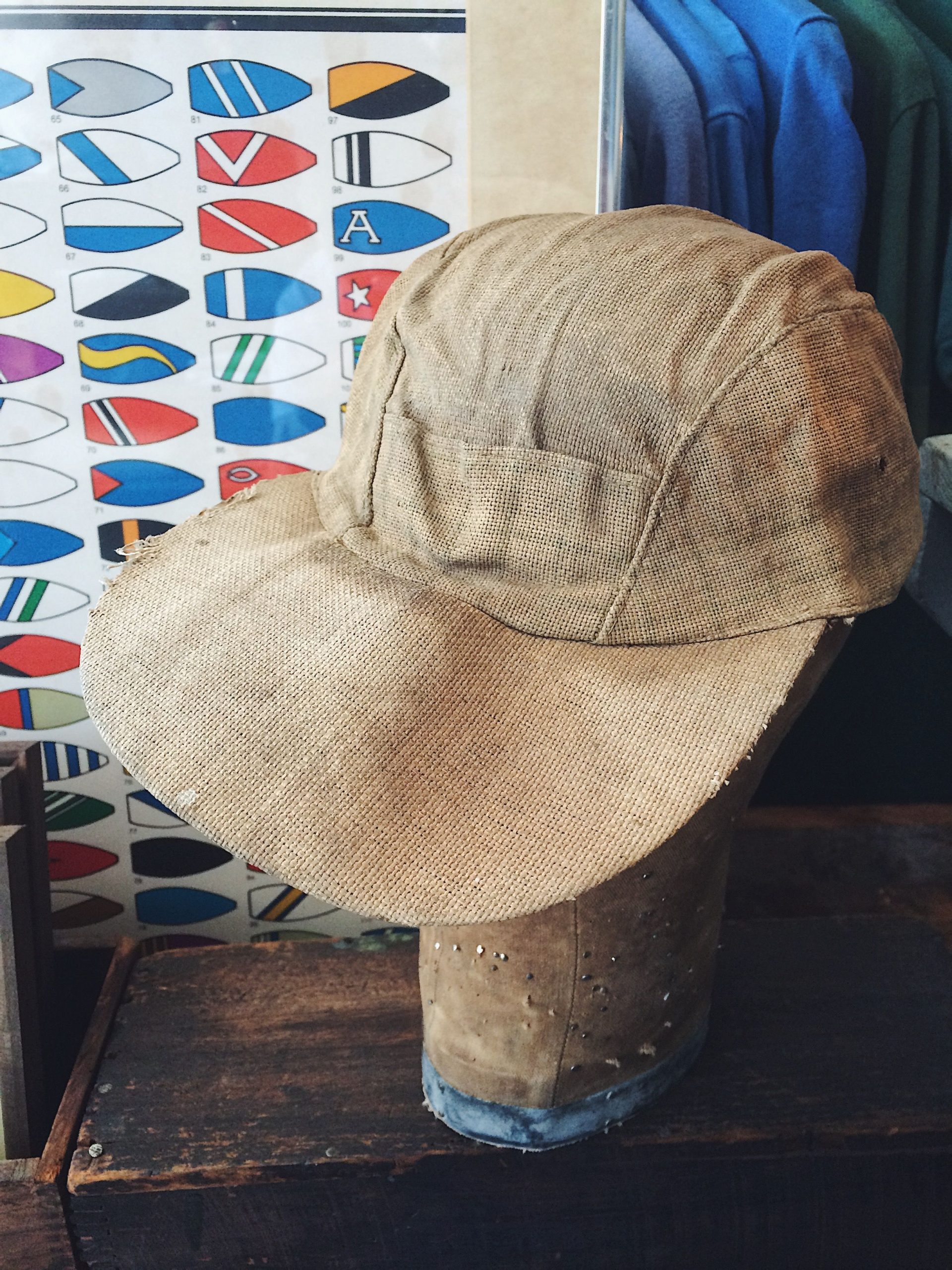

A Long Bill Or Bucket Hat
“I have a big head and think bigger caps look proportional on me. So for a long time, I scoured eBay for old fishing and hunting hats with a long bill. Until Quaker Marine came back, no one was doing these. Even that brands that historically made them, such as Polo and Filson, discontinued the style. Now there’s Quaker Marine, Papa Nui, and some small, indie sellers on Instagram, where you can buy a long bill hat that’s new.
It’s the same with bucket hats. Sometimes I feel like I’m wearing a baby bonnet; other times, I think, ‘oh, this looks cool.’ I think you have to try different bucket hats to find one that suits you. With vintage stuff, caps tend to be small, so you want to scrutinize the measurements. You also want to pay attention to the condition. I don’t mind vintage hats with paint splatters, but I don’t want something that’s super sweat-stained.”

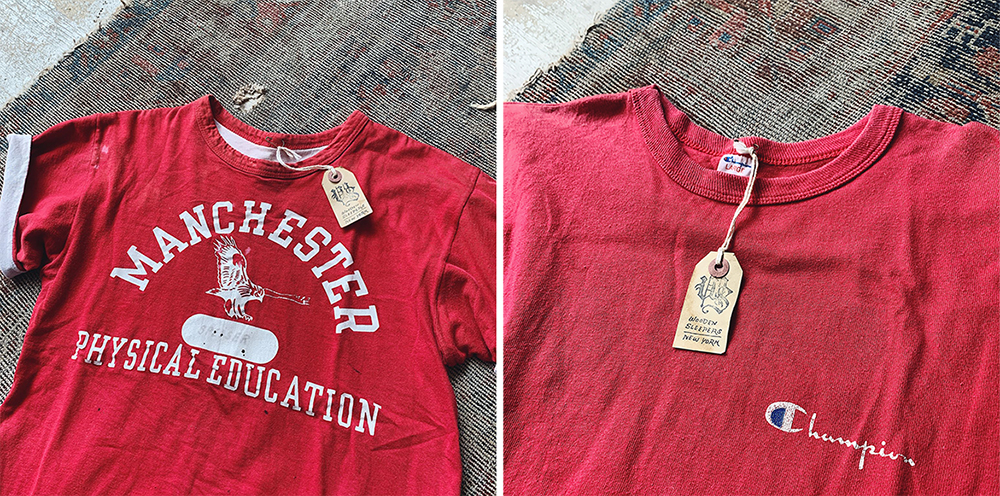
T-shirts
“If you’re new to the vintage world, a vintage tee is one of your top three entry points. I know guys who shop at Uniqlo and J. Crew, and they look great when they incorporate something such as a vintage t-shirt into an outfit. It can be a vintage tee with a cool graphic, such as a collegiate or an athletic print. Or it can be a plain, unadorned tee. I’m obsessed with vintage pocket tees. I have a stack of plain blue pocket tees from Hanes and Fruit of a Loom. Since they’re from the 1970s and ‘80s, they’ve been washed a million times, so they have this nice fade and soft cotton feel that you can’t get in a new t-shirt.
Vintage tees are a lot like vintage sweatshirts. The fit will depend on the decade. T-shirts from the 1950s have much shorter sleeves and trimmer bodies, while t-shirts from the ‘70s are super long and tight, like that Dazed & Confused look. People wore them tucked into Levi’s bellbottoms. I admit, even for someone who does this professionally, you’re looking through hundreds of these things to find the one good t-shirt. This may be a thing where, unless you’re looking to spend a lot of time on this, it helps to find a vintage dealer with sensibilities that speak to you, as they’re going to help provide that edit. If someone comes to me, they can find old athletic or outdoorsy themed t-shirts because I think those look good with what I sell and wear. You know the t-shirts are going to be well-made and not have armpit stains. Otherwise, hunting for this stuff can be hours of work, and you can feel like you’re searching for a needle in a haystack.”
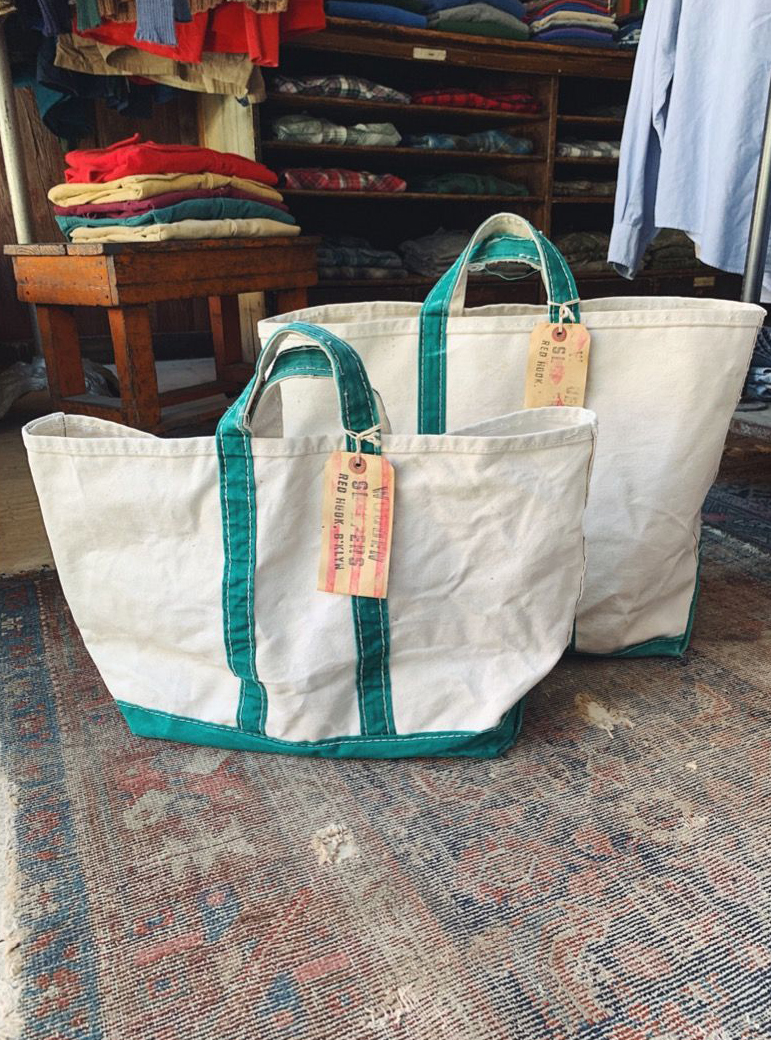
Canvas Bags
“I’m obsessed with vintage LL Bean totes and old canvas tool bags, such as those bell system bags made for linemen. Of course, you can find new canvas totes today. LL Bean makes a great ‘boat and tote’ bag that you can beat up yourself. But if you shop vintage, it will also already have those cool frays and wear patterns. Many of the brands I’ve been talking about — Land’s End, LL Bean, and Eddie Bauer — made great canvas bags in the past, and you can find them used.
The thing about shopping for vintage in this category is that the prices can wildly vary. Someone might have a vintage, stained bag that’s super funky, and they think they should charge more for it, given the bag’s condition. Others might think the bag is thrashed and list it for ten dollars. So it’s just a matter of combing through the selection and finding what’s right for you.” [Derek’s note: Brian is too polite to mention this, but J. Crew recently collaborated with his company to create some editorials and a small line of co-branded items. Included is a really lovely tote made from heavy cotton canvas.]
Thanks to Brian for taking the time to chat with me. Readers interested in these items can take Brian’s tips and scour eBay or Etsy. He also has a small online shop and regularly posts things he’s selling on his Instagram stories. For readers in New York City, Wooden Sleepers also has a small, edited selection of vintage goods at Knickerbocker’s new flagship (located on the northwest corner of Wooster and Canal Street in SoHo). The online menswear shop No Man Walks Alone also carries some of their things in their section “Vintage Corner.”
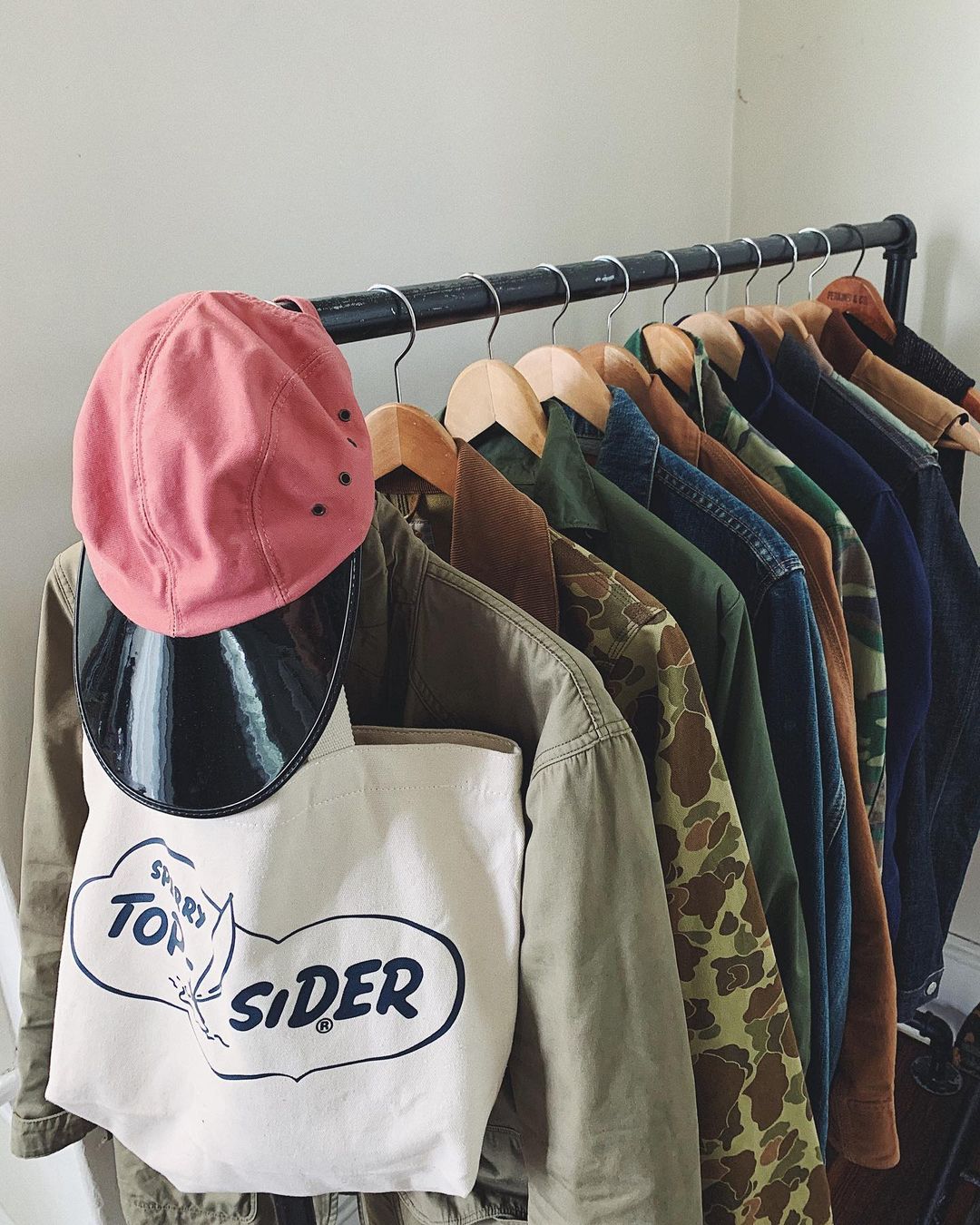
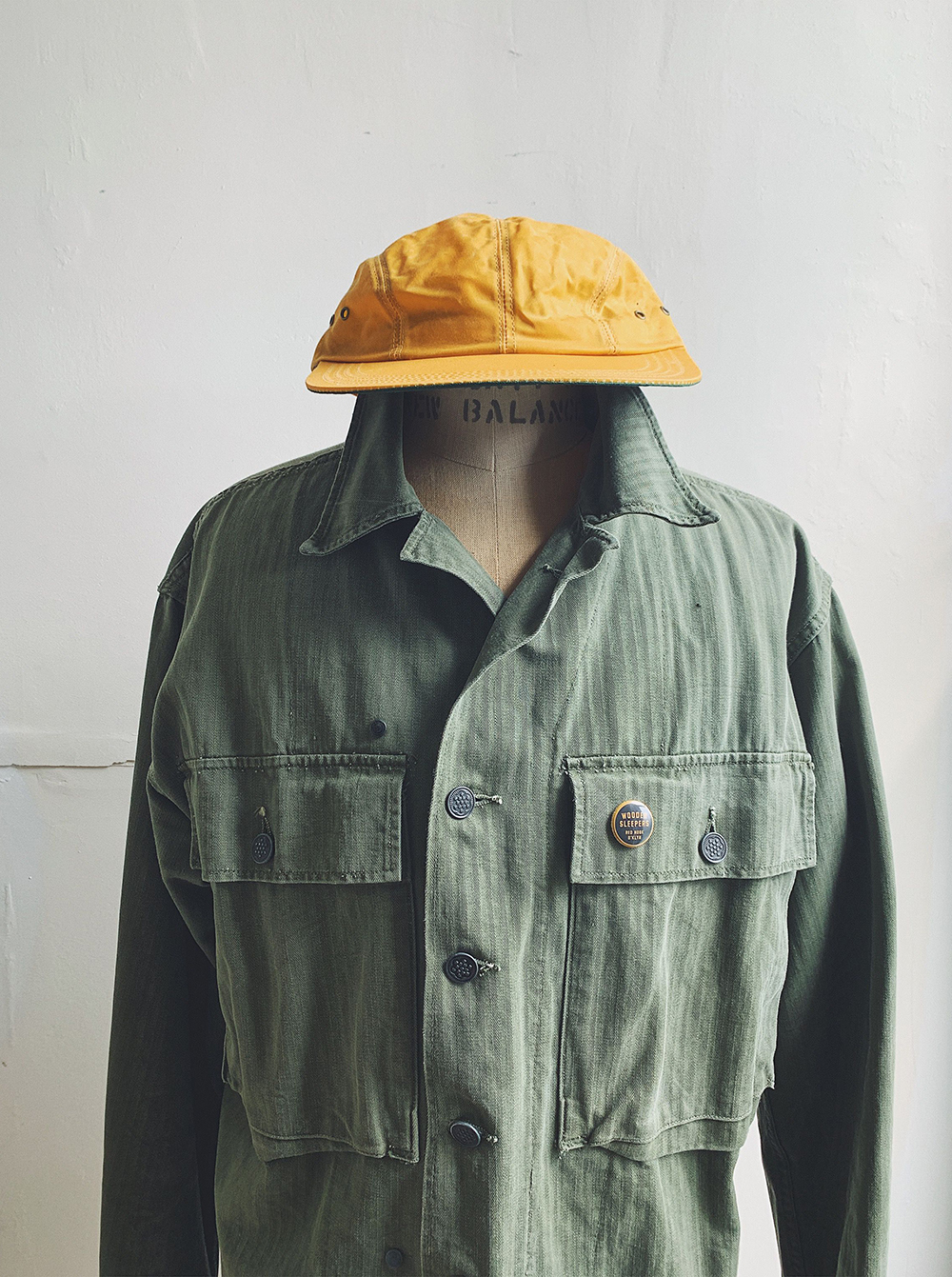

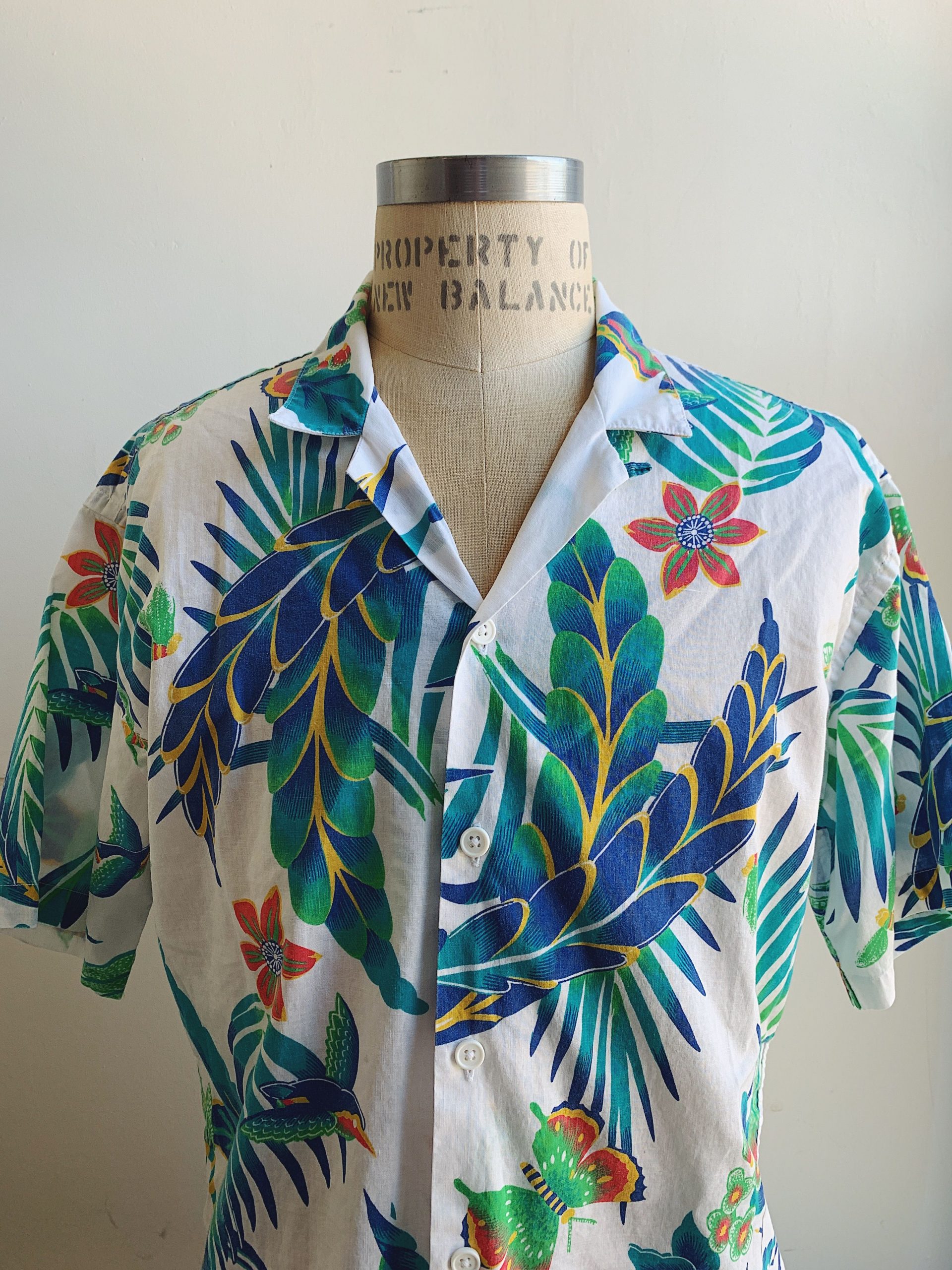
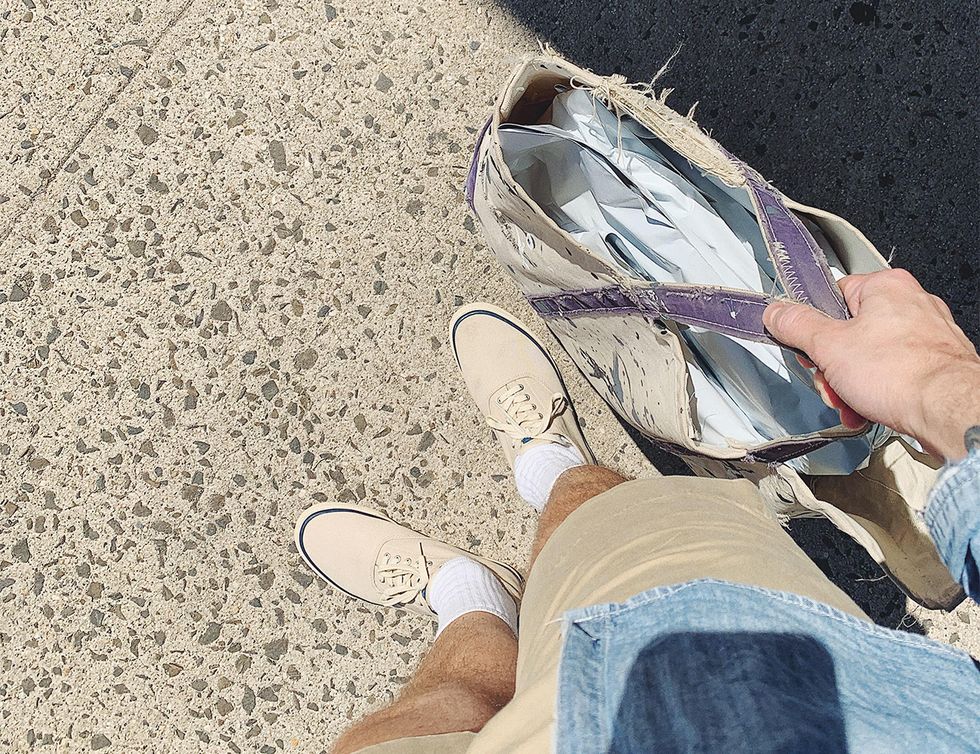
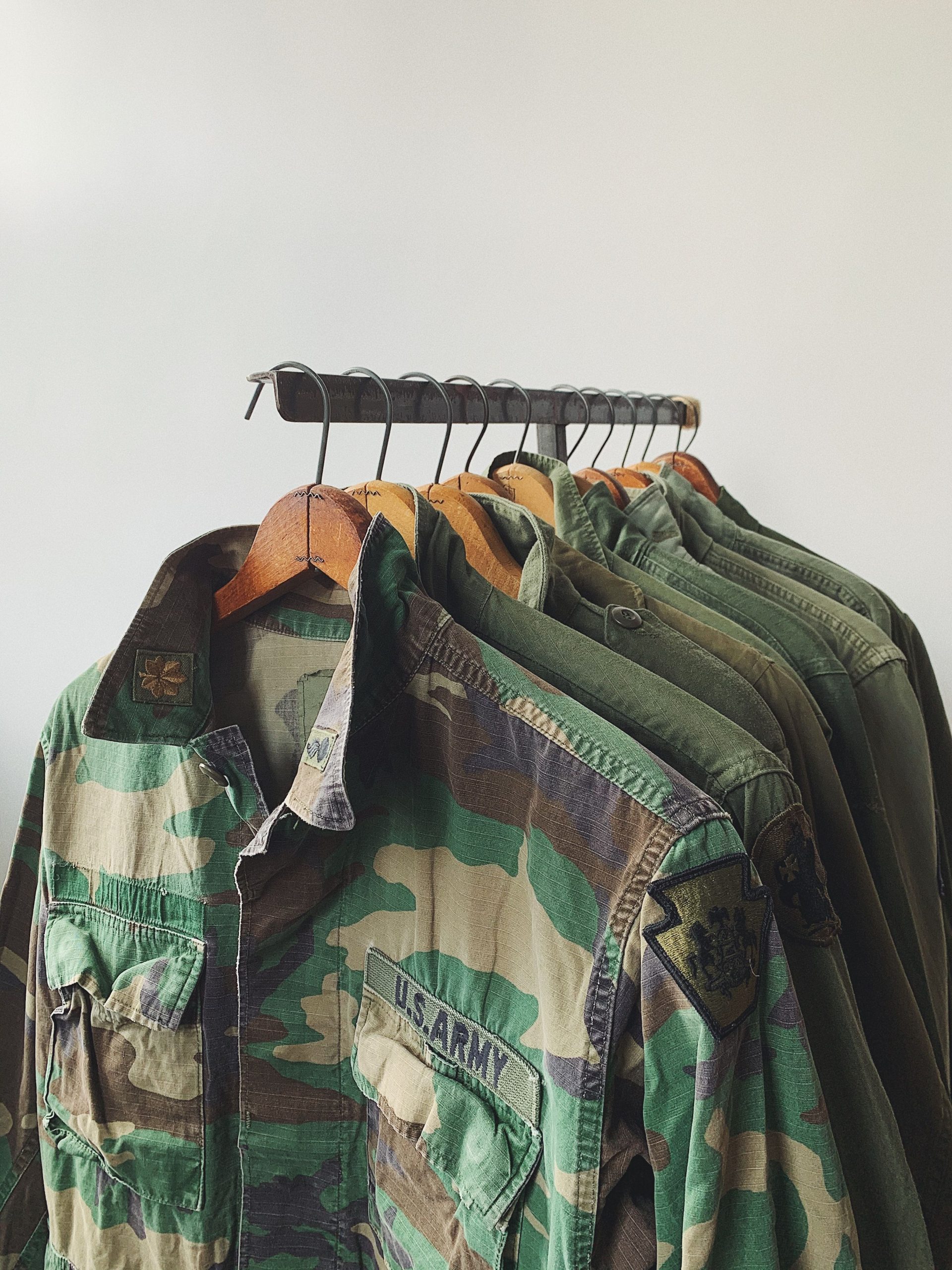
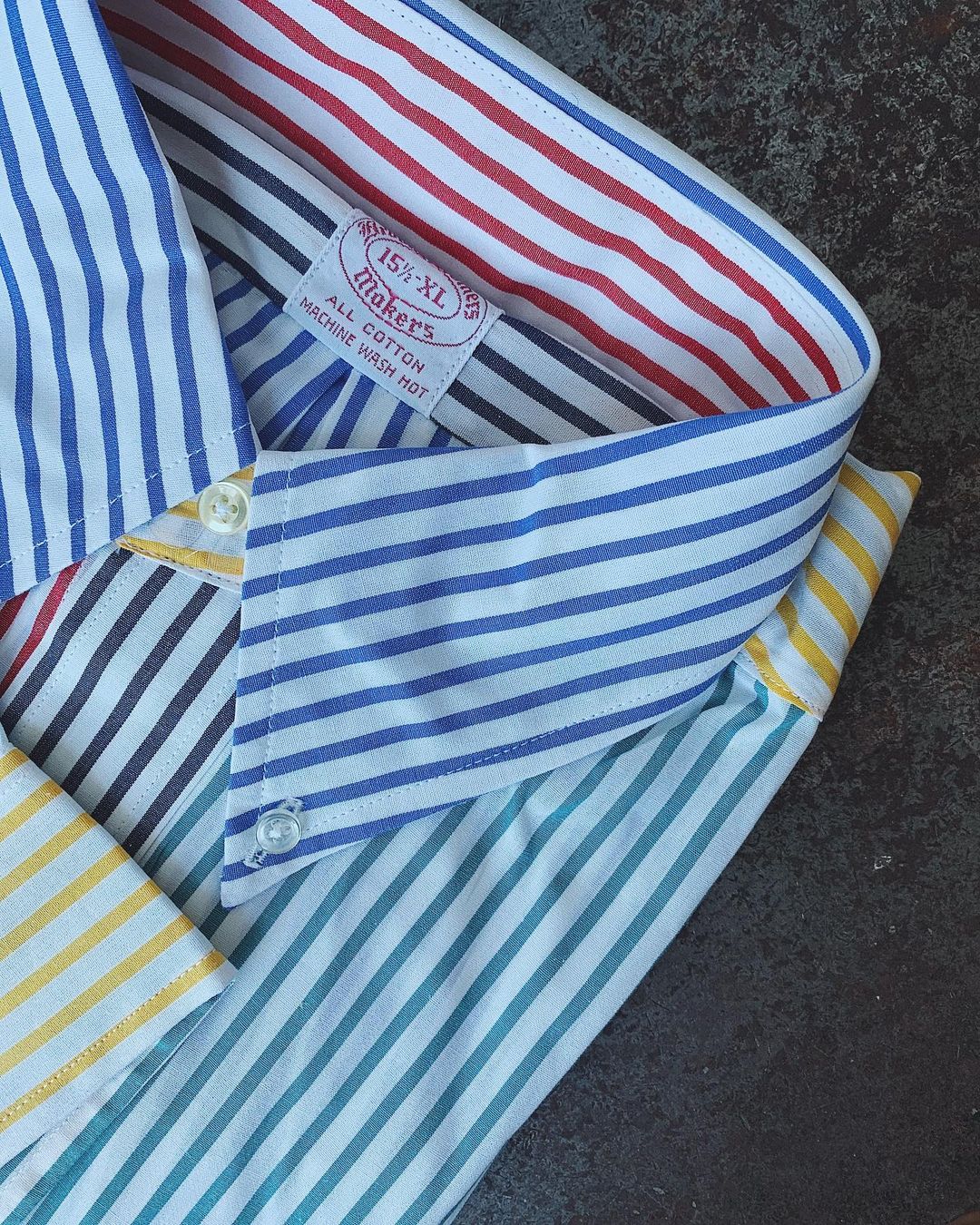
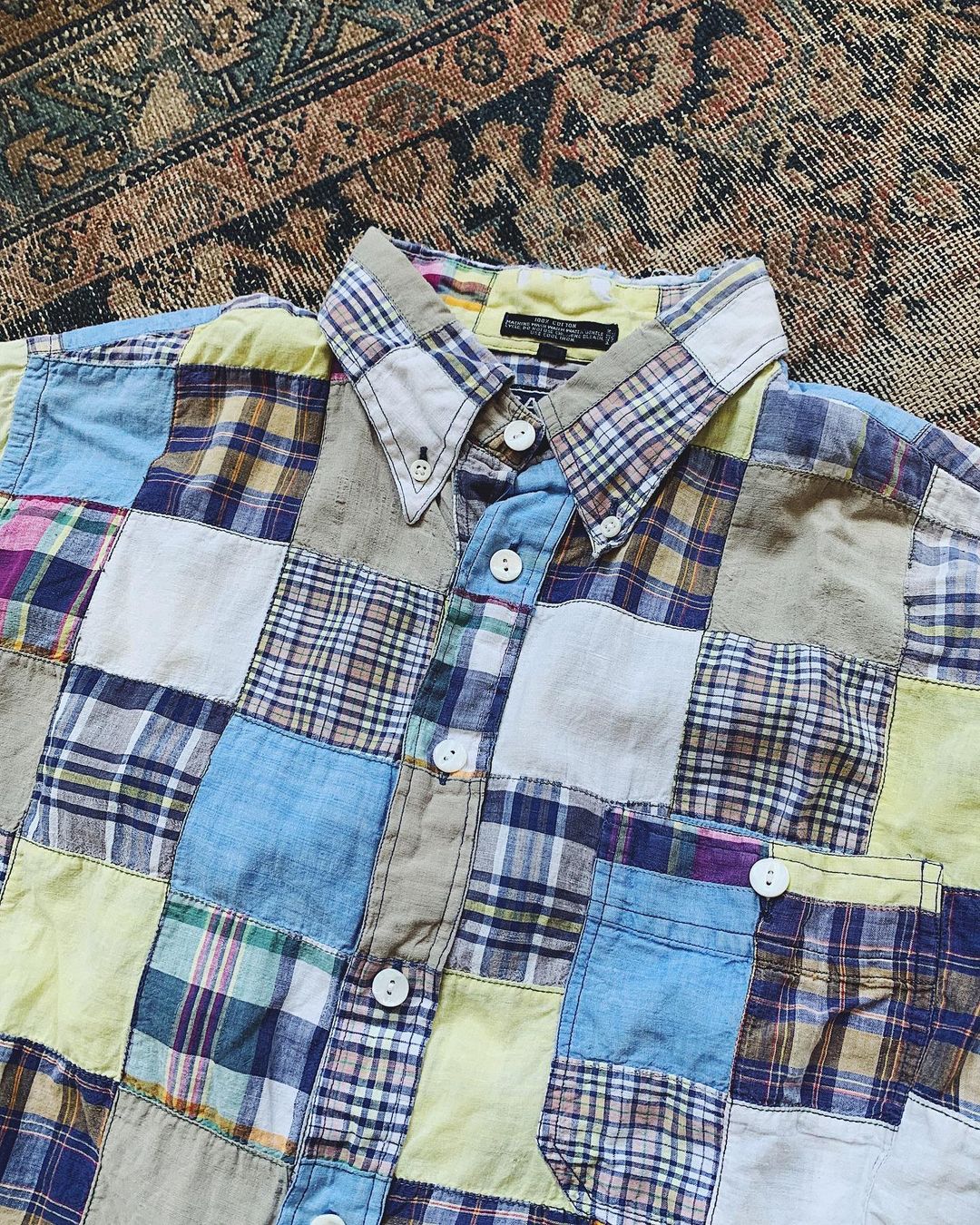
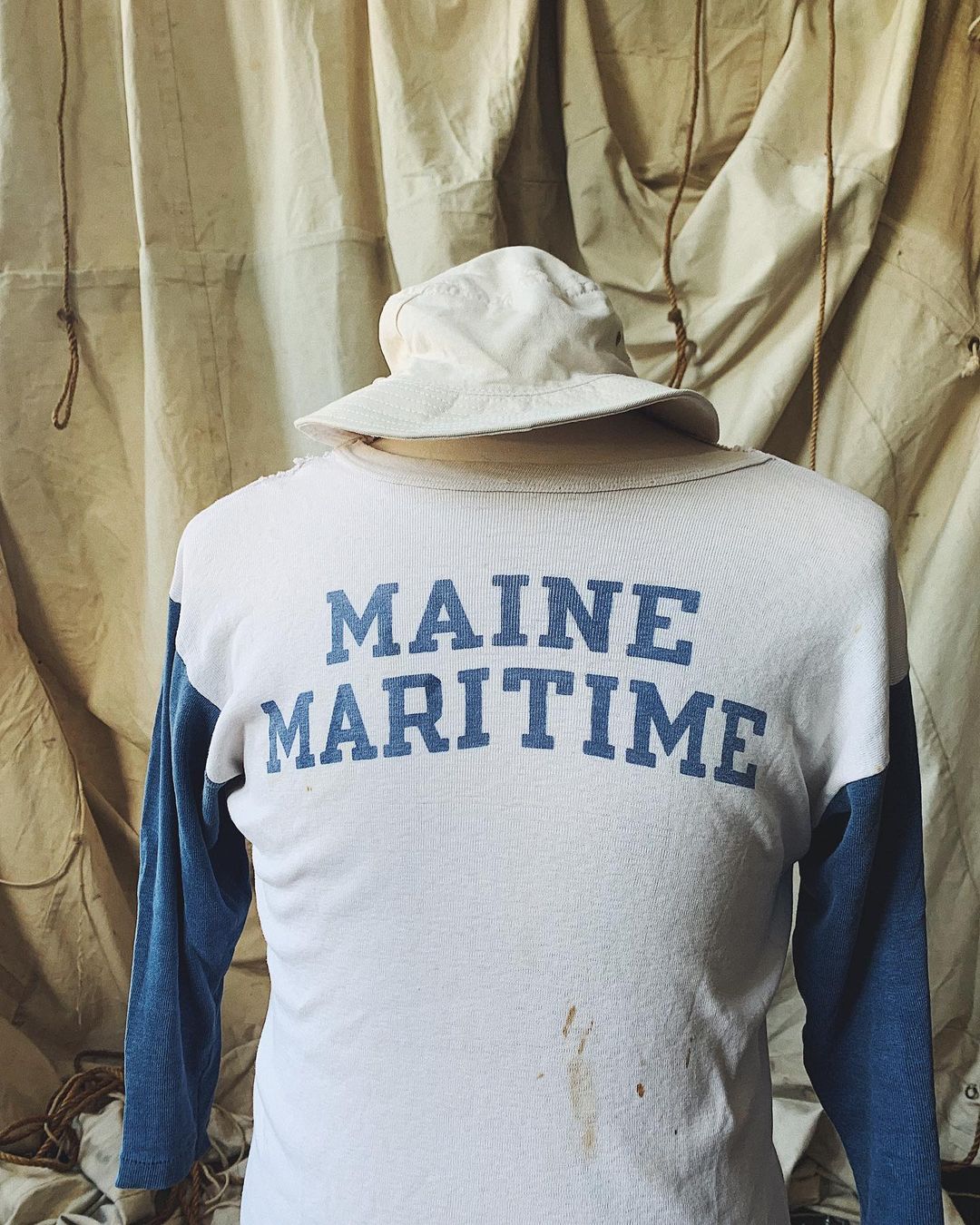
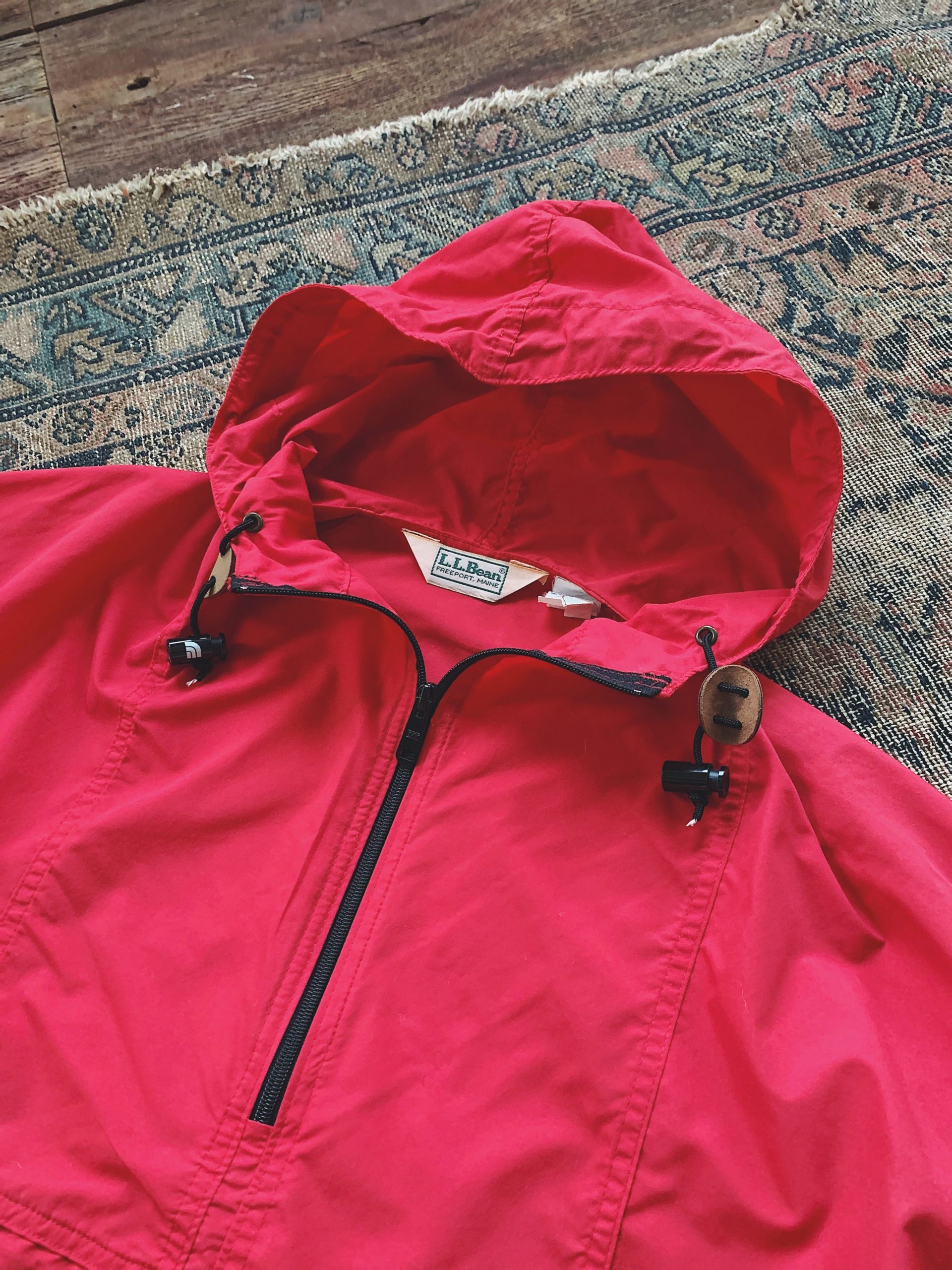
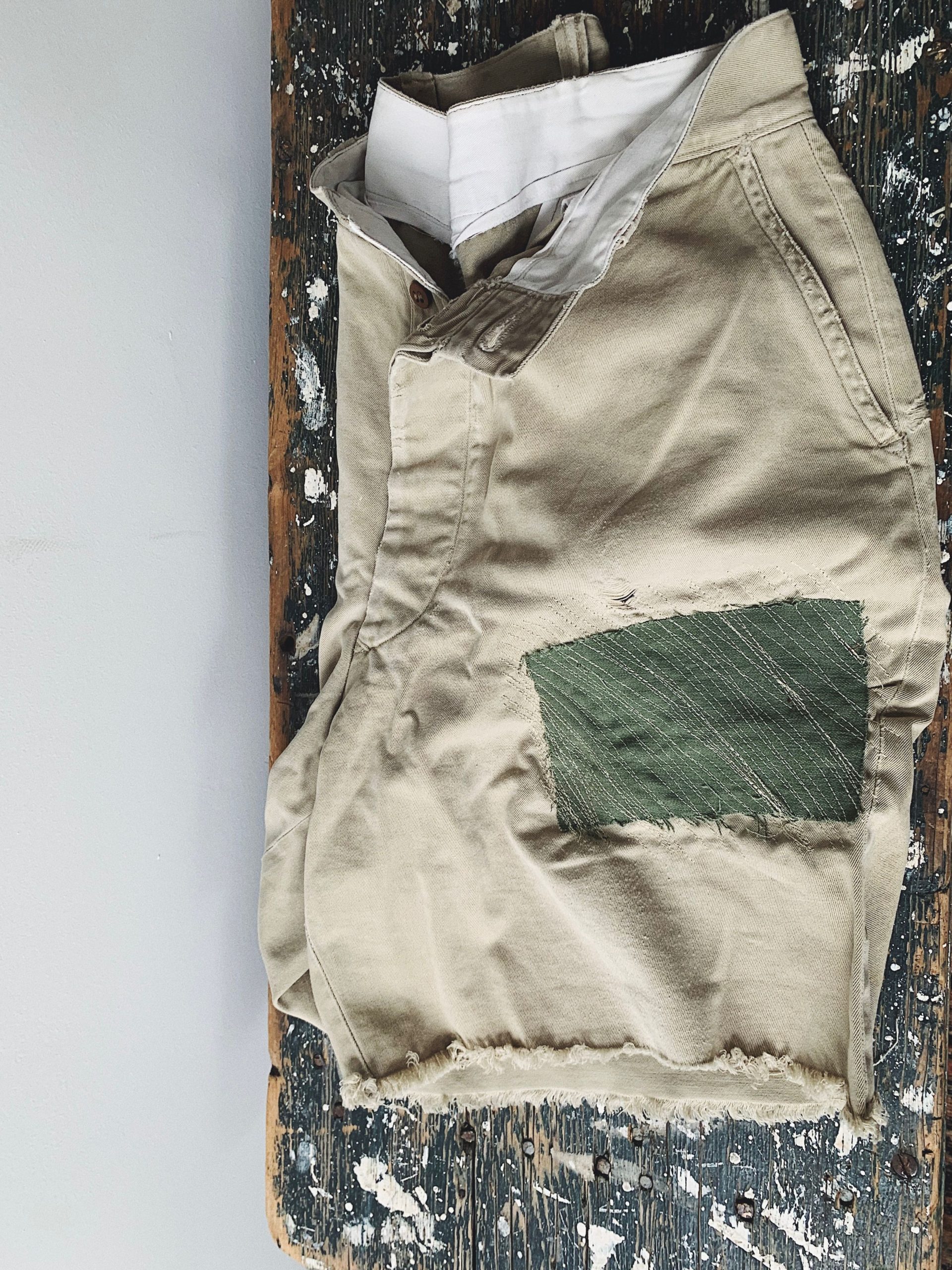
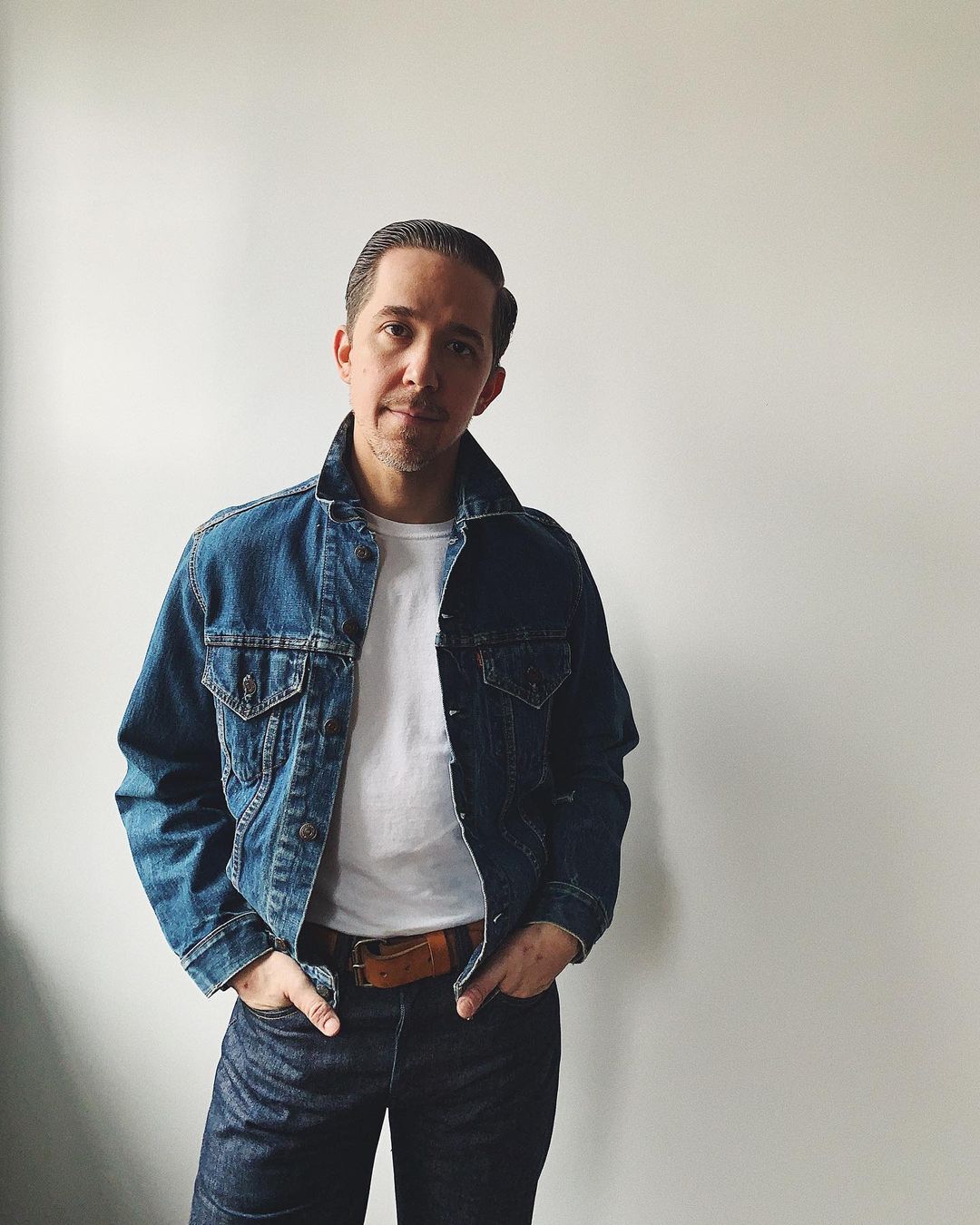
The post Better With Age: 10 Things Better Bought Used appeared first on Put This On.